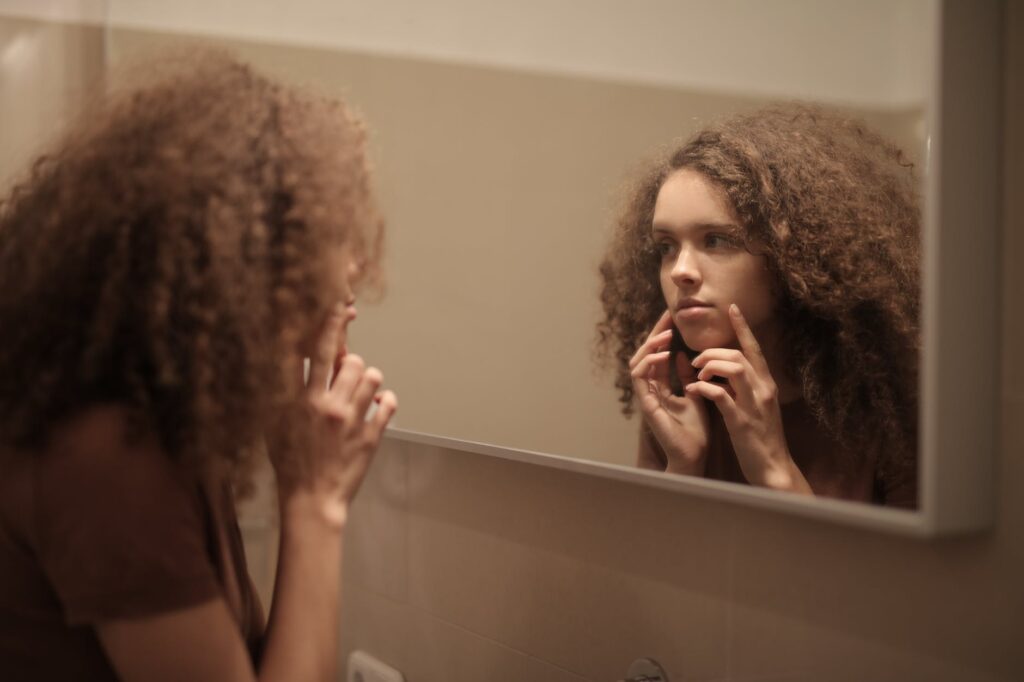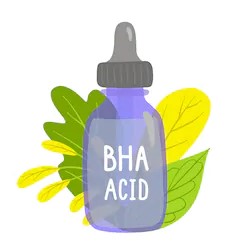People may search for different skin treatments for different types of skin problems like acne, whiteheads, milia, blackheads, dark spots, uneven skin tone, and so on. And for sure, it’s not easy and safe to apply different types of products on your skin for each skin issue. So what about solving all your skin problems together with AHA/BHA? AHA and BHA work somehow similarly by sharing their common goal to exfoliate the dead skin cells in your skin and help you to make your skin smooth, glowing, and healthier.
Table of Contents
What is AHA/BHA?
Alpha Hydroxy Acid(AHA) and Beta Hydroxy Acid(BHA) are naturally occurring acids. AHA is generally found in sugarcane, and some citrus food and BHAs are found in some plants like the bark of willow trees.
AHA is water-soluble whereas, BHA is oil-soluble. The thing that highly matters is how they treat your skin. AHA and BHA are widely popular as chemical exfoliators to treat your skin from dead skin cells and even out your uneven skin tone. In addition to this, AHA is more gentle and works on the surface of the skin whereas BHA is not as gentle as AHA and goes deep down in the skin to extract all the specks of dirt and impurities. That’s the reason why BHA is especially recommended to oily-acne prone skin types.
Many of you may have used Glycolic Acids, Lactic Acids, Salicylic Acid in your skincare routine, and if you are not aware of it, then let me tell you that these are the actual AHAs and BHAs that you need for your skin.

Glycolic Acid and Lactic Acid
These are the major AHA that you may have been hearing for a proper skincare routine.
The main benefit of AHA is to exfoliate the skin to repair your dry and sun-damaged skin.
AHA also has anti-aging properties that help with the age spots, skin discoloration along with the reduction of wrinkles and fine lines.
These acids work by loosening the bond that holds together the top layers of dead skin cells by removing the excess build-up on the surface of the skin and helps you to get softer and healthier-looking skin.
Salicylic Acid
BHA are oil-soluble and commonly known as Salicylic Acid. Solubility is the main difference between AHA and BHA. Salicylic Acid gets down into the pores to cut through the oil that’s clogging them. BHAs are generally used to treat acne-prone skin and blackheads because they have anti-inflammatory and anti-bacterial properties.
NOTE: Always use a moisturizer and a sunscreen with SPF-30 or more after treating your skin with AHA and BHA.
Benefits of using AHA and BHA
Although AHA and BHA are commonly recognized to exfoliate your skin, there are lots of other benefits of using AHA and BHA.

AHA and BHA to Reduce Hyperpigmentation
Hyperpigmentation usually occurs due to the excess production of melanin, a dark pigment, sun damage, inflammation, or any other skin injuries. The excess production of melanin may lead you to discoloration of skin, unevenness, and hyperpigmentation.
Alpha Hydroxy Acids like glycolic acid and lactic acid inhibit the melanin from forming and can also reduce the cells in the epidermis that are darkened with too much melanin.
Similarly, BHA has anti-inflammatory properties, which helps to improve hyperpigmentation due to inflammation.
So, this might be good news for people having scarring and discoloration from inflammatory acne!
AHA to Improve Sun Damage
Similar to the benefits of reducing hyperpigmentation, AHAs work magically on your sun-damage skin by improving discoloration and by maintaining the skin textures.
AHA and BHA to Treat and Prevent Acne
Both AHA and BHA help to prevent and treat different types of acne.
As the BHA can dissolve deep into the skin it suppresses the bacteria that causes acne and helps to unclog the pores which make them effective in fighting acne.
Similarly, dead skin cells play a huge role in the formation of acne. The dead skin cells buildup over time and mix with oil and sebum leading to breakouts. Using a chemical exfoliator like AHA bursts those dead skin cells and loosens the bond they have with the hardened sebum which helps in the prevention of acne.
AHA as a Skin Hydrator
AHA being water-soluble are highly recommended for dry skin or dehydrated skin.
AHAs like Glycolic acid and lactic acid are great for moisturizing because they help to improve the skin barrier function and increase hydration level due to an increase in naturally occurring Hyaluronic acid within the skin.

AHA for Smoother Skin
AHAs are the gentle exfoliator that works on the surface of the skin and helps to improve skin texture and reveals softer and smoother skin.
BHA for Oily Skin
BHA like Salicylic Acid is game changer product for oily acne-prone skin.
Using a Salicylic Acid based cleanser or an exfoliator helps to stop excess oil production and regulates moisture balance in the skin. In addition to this, BHAs penetrate deep down through your pores unclog them and make them appear smaller.
BHA for Anti-Aging
The use of BHA are highly related to anti-aging. Since BHAs are meant to improve the skin textures they also improve your appearance of wrinkles and fine lines.
This chemical exfoliator stimulates cell renewal by shedding away dead skin cells and making room for new ones.

Conclusion
Even though AHAs and BHAs may have uncountable benefits for your skin, make sure to use them according to your skin type and sensitivity.
AHA and BHA share similar properties to maintain your skin barrier and can be used as the best exfoliator to deeply clean your skin. However, you can use both of them individually to achieve different skincare goals.
If you are still not sure about what to choose and what may be best for your skin, visit your dermatologist as they can answer any questions and deal with your skin problems.
NOTE: AHA and BHA can cause sun sensitivity, so don’t forget to apply a moisturizer and a sunscreen of SPF-30 or more after using AHAs and BHAs on your skin.
Frequently Asked Questions
When to use AHA BHA peeling solution?
Well, if you are using each of them as different ingredients use a Salicylic Acid(BHA) Cleanser to cleanse your skin and use AHAs like Glycolic and Lactic acid as a face toner/serum on daily basis but if you are using both of them together as a peeling solution(exfoliator) use them only twice a week.
(Over exfoliation is also not good for your skin.)
What does AHA/BHA peel do?
AHA and BHA are the exfoliators for your skin that goes deep down to your skins and cleans all the impure dirt and unclog your pores. It also helps to remove blackheads, whiteheads, acne, milia, and other various skin problems.
In addition to this, AHAS and BHAs can really help you in preventing fine lines, wrinkles, and also deals with the damages caused by the exposure to the sun.
Can AHA BHA be used with niacinamide?
It would be better to use niacinamide in the morning and AHA/BHA in the night. This is because niacinamide is non-acidic in nature and can be applied underneath your hydrating serum, moisturizer, or sunscreen without having to wait in between the layers.
But Acids on the other side, need to be separated from higher-pH products by about 30 minutes, to allow them to work at their optimal pH. So, if you want your acids to work on your face, try to give some time to the skin to absorb the acids.
Is AHA/BHA good for oily skin?
For oily acne-prone skin, you are suggested to use Salicylic Acid based cleansers i.e., BHAs as it goes deep down to your skin and removes all the impurities and specks of dirt which helps to prevent breakouts. You can slowly add AHAs like Glycolic acids and Lactic acid to your skincare routine as a gentle toner.
You Might Be Interested In
Skincare Routine For Oily Skin
